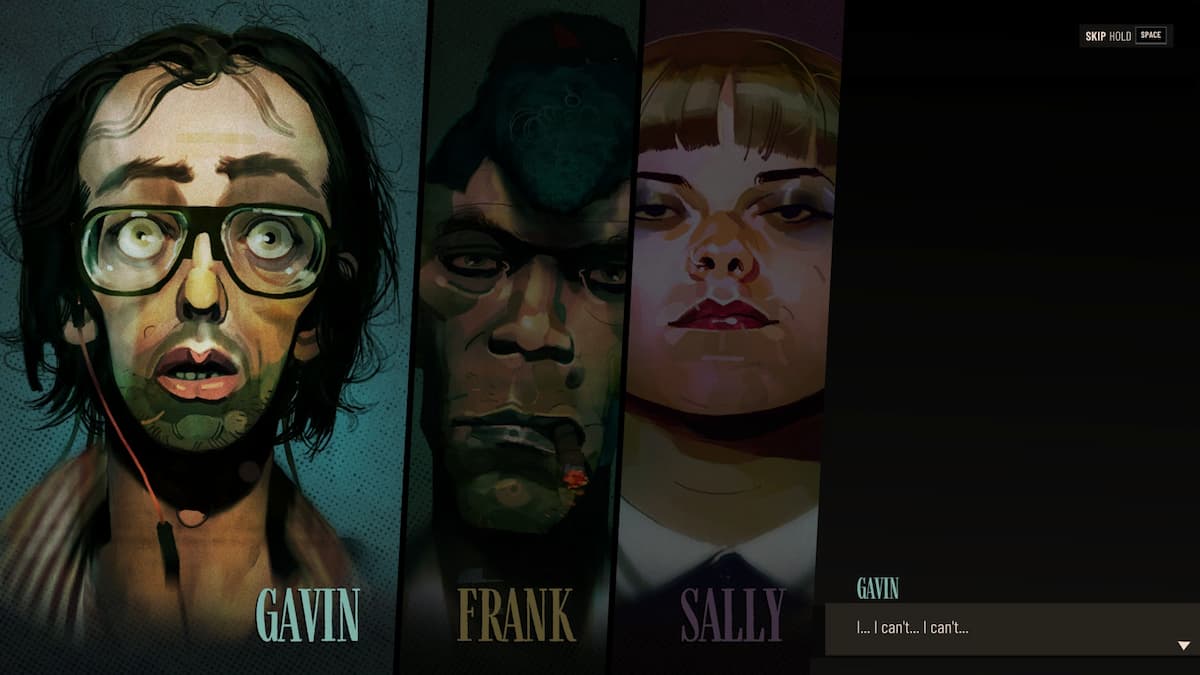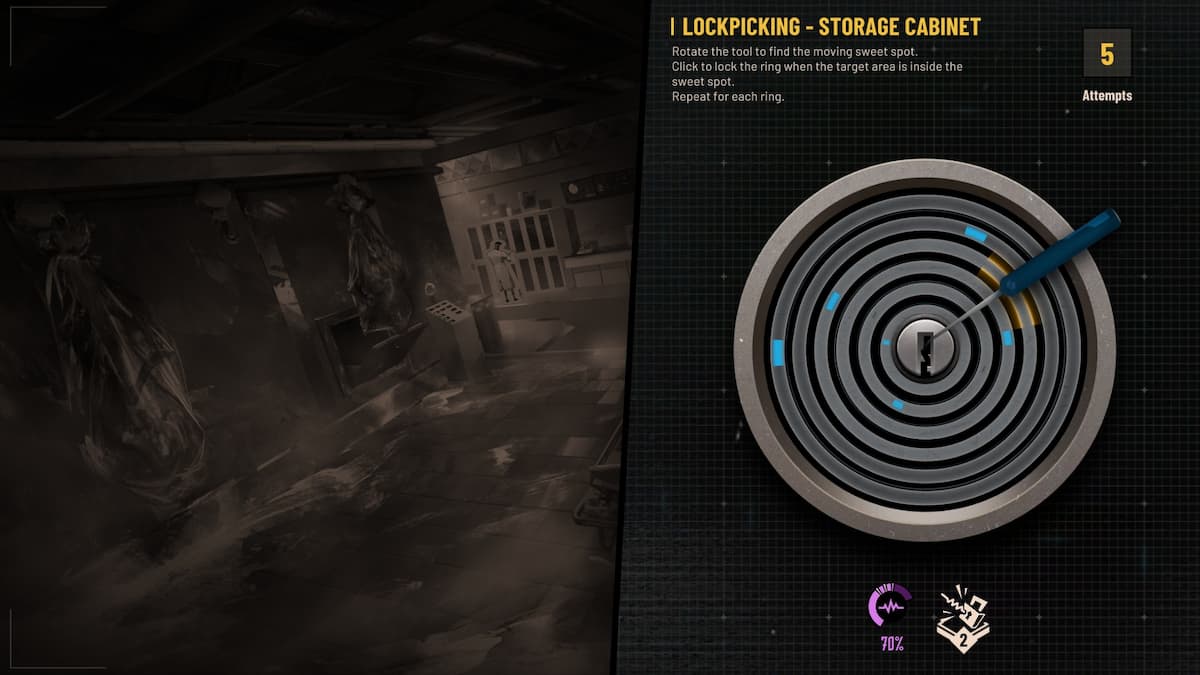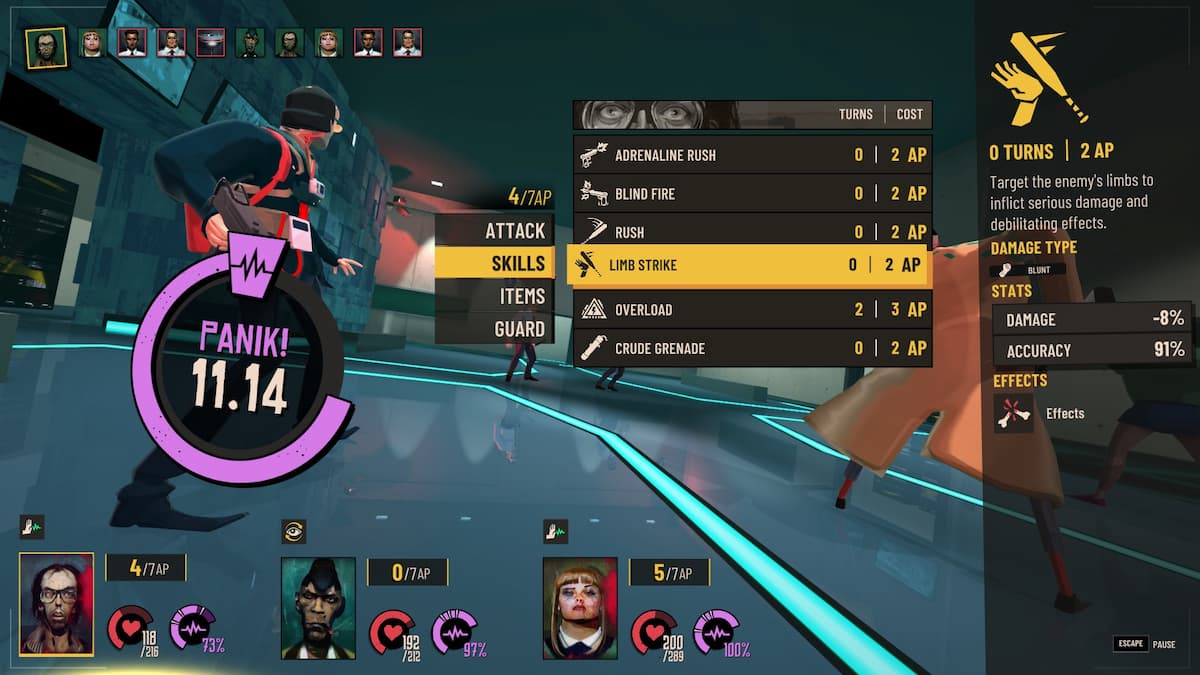Sunday Gold on PC
I’ve never been super into the point-and-click puzzle style of games, as titles like Monkey Island used to give me a lot of trouble as a kid, souring the genre for me as a result. However, I found myself enjoying Sunday Gold. The mishmash of turn-based RPG and point-and-click really meld well, and I enjoyed how the game had these two genres playing off each other throughout. Sunday Gold feels like a Frankenstein of fantasy, mechanics, and ideas, which resulted in something that was fun, albeit shallow.
To begin, I want to address the most striking part of the game, the artwork. Sunday Gold has a very unique hand-painted and cell-shaded aesthetic. Similar to Disco Elysium, the style is very painterly and brings a dark comic book aesthetic to life. Cutscenes are usually partially animated, making use of the simple low poly 3D models or comic book-styled panels to set a mood or describe a scenario.

One other thing the art brings to the game is this really unsettling dark feeling. Everything feels off in a way that’s hard to describe. Characters often have exaggerated features or expressions, and the environments are a meld of a dark 70s London and sci-fi that blends nicely. The game often made me feel like it was taking place in a booze-binge fever dream.
The actual gameplay loop itself is also very interesting. When games attempt to mash genres together, it can occasionally create a duality that results in a lesser of both scenarios. However, Sunday Gold surprised me in this regard; throughout my time with the game, I felt like its two halves were welded together in such a way that they felt uniform and consistent throughout. Bouncing between exploration and combat made sense and often impacted each other in interesting ways, specifically with the action point system.
When you enter a location for your mission, the game operates more or less like a standard point and click. You hover over the highlighted thing and see what it does when you interact. To spin this, BKOM Studios has given each of our three protagonists special abilities and action points to use outside of combat. Each one has a mini-game associated with their specialty, Gavin hacks things, Frank lock-picks, and Sally punches things.
The minigames themselves felt interesting enough, albeit uninspired. I was relieved to see there was no Skyrim-style lockpicking, but the alternative presented here never really felt hard at all, and it was nothing more than just ‘click here when the thing lines up. On the opposite end of the spectrum, Gavin’s hacking minigame was interesting, but I was often frustrated by it; often feeling like the game was lying to me about what numbers were correct or not when I tried to input them. Sally’s game was probably the least interesting and easiest of the three and just involved balancing an arrow on the correct location for a moment.

Whenever you use one of these specialties or just interact with the world around you, the character that you have selected will use up some of their action points. Once all three are out of points, you’ll have to end your turn, which results in an alert meter going up. The higher the meter, the more resistance you’ll face as you explore around. It’s a pretty simple and elegant way to justify random combat encounters as you explore and works well to add some tension and consequence to trying to hack the same computer over and over.
Another primary mechanic is the sanity or panic meter. Certain events and random encounters will lower a character’s mental state, which results in some cool visuals, jumbled letters, or even hallucinating enemies where there aren’t any. In practice, I found it to be pretty irrelevant; other than giving you a timer during combat, I was never really pushed to actually balance a character’s sanity. For most of the game, my characters spent their time at full sanity, and if one did drop, I always had some sort of item to boost it back quickly.
In one segment at the end of chapter 1, Gavin has a big realization that is a segue to chapter 2. During this time, Gavin is supposedly having a major meltdown, and his sanity drops to its minimum as a result. However, I had enough items to just boost it back to full, removing the challenge here entirely, and honestly, I felt like I may have missed out on a cool section of the story by doing this.

Each character also has an RPG-style system of skill points, items, weapons, and equipment to help you while you sneak around. The equipment and weapons are interesting at a glance, but I was disappointed that only a few offered anything really unique. Most of the time, it was just using whatever had the highest numbers at that moment without any additional thought.
The skill point system definitely left something to be desired as well, and I felt as though, towards the latter part of the game, I had almost maxed out every skill for each character that I wanted. This resulted in me just putting points in random skills to clear the notification rather than trying to further any kind of interesting build.
Combat itself tended to be pretty straightforward and more of an annoyance while you were trying to do cool investigative stuff; outside of a select few fights, I never really had issues actually winning encounters. It felt like there was often a lot of options I could use, but it tended to be smoother to just use whatever ability hit the hardest at that moment. The enemies also tended to be incredibly bullet-spongy, and there were many times when I felt as though I had already won the fight, even though the boss or enemy had more than half a health bar.
